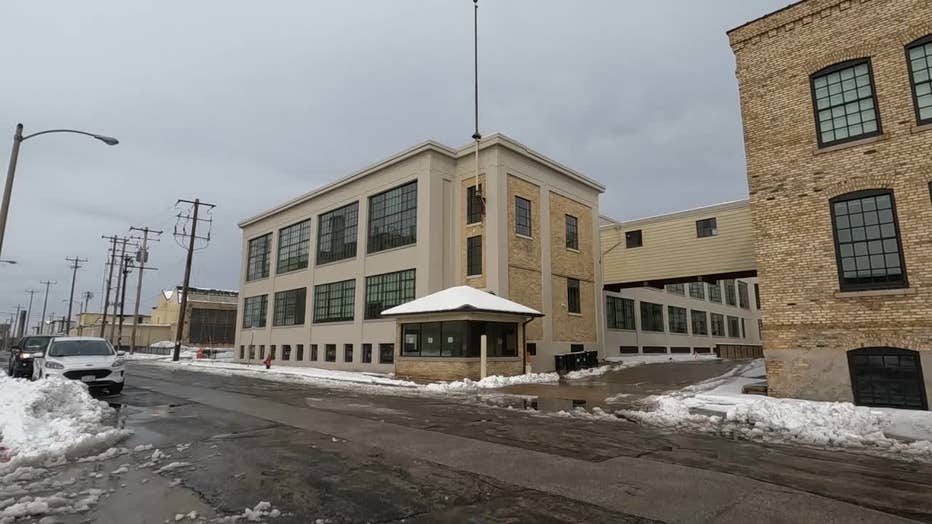Milwaukee apartment evacuated, TCE chemical, DNR issues emergency order

Milwaukee apartment evacuated, TCE chemical, DNR issues emergency order
A Marquette University chemistry professor said careful TCE vapor monitoring and mitigation will need to continue at the "Community Within the Corridor" apartment building as long as people live there.
MILWAUKEE - With no end in sight for evacuated residents, tests are still finding high concentrations of a dangerous chemical at Milwaukee's "Community Within the Corridor" apartments.
CWC developers must keep the Wisconsin Department of Natural Resources in the loop or face prosecution.
The DNR said CWC didn’t tell them the building was occupied until right before more than 150 residents had to be evacuated because of high levels of TCE. Now, they’ve issued an emergency order requiring developers to submit documents to the DNR about how they’re addressing the chemical hazard, adding that it's an order enforceable through prosecution by the attorney general.
TCE is often used as a degreaser, and at one time, was also used as an anesthetic. Its negative health consequences when inhaled have since become known.
Perhaps the best place to learn about chemicals like TCE and safety measures is a place people work with chemicals daily.
"We’re making sure we’re not getting exposed to (a chemical) for long periods of time," said Joe Clark, Marquette University assistant professor of chemistry.

Clark knows you have to keep an eye on what you can’t see.
"We have air that’s constantly being replaced in here, and same with here," said Clark.
He said when it comes to safety around chemicals like TCE, ventilation is a key part of the formula.
Clark said that TCE usually leaves your body after about a day once you’re away from it, but it can have long-term health effects, especially for pregnant women and their unborn children.
"That’s something we need to be very conscious of, just in this laboratory," said Clark.
Monitoring TCE levels is critical where people live, too.
SIGN UP TODAY: Get daily headlines, breaking news emails from FOX6 News

Community Within the Corridor closed due to chemical hazard
"If you build a structure on top of an area that’s contaminated with TCE, then you can expect for sure that TCE is for sure going to be coming up into that building," said Clark.
That’s what testing has found at the east block of the "Community Within the Corridor" apartment building. Mitigation systems can prevent high levels of TCE vapor, but the systems at CWC's building haven’t been able to keep TCE at what’s considered safe levels by the DNR, 2.1 micrograms per cubic meter (ug/m3).
An April report from CWC partners sent to the DNR said that as of April 1, 100 samples in the building were tested for TCE, and the first floor is the most impacted. In one unit, TCE levels were found at 350 ug/m3. It also says that a test of a hole in the wall of one unit detected TCE at 8,000 ug/m3.
The report, written by KSingh, says the main cause has been identified as pathways for vapors to move through holes and cracks and an ineffective mitigation system.
"The main cause of the problem has been identified. Preferential pathways for vapors to move upward through the void space, holes in the floor, and minor cracks in the column are identified," the memo said. "Vapor mitigation system is not very effective because of the presence of water in the knockout drums for the blowers and because of the water in the piping system of the vapor mitigation system."
The DNR is monitoring CWC, as well, issuing an emergency order requiring them to submit documentation of their immediate actions and their outcomes.

Community Within the Corridor closed due to chemical hazard
"There’s definitely a way for engineers to make it possible to be monitoring, ‘is the airflow proper?’" said Clark.
At the lab, Clark said careful TCE vapor monitoring and mitigation will need to continue at the apartment building as long as people live there.
"As long as that building stands there, for sure, the TCE’s not going away," said Clark.
CWC said in a statement displaced residents are not paying rent or utilities while they’re away from home, and CWC is putting them up in hotels and offering them food and transportation stipends.
CWC adds that they're working closely with the DNR to find a solution and get people home as soon as possible, though they can't provide an exact timeline yet.

